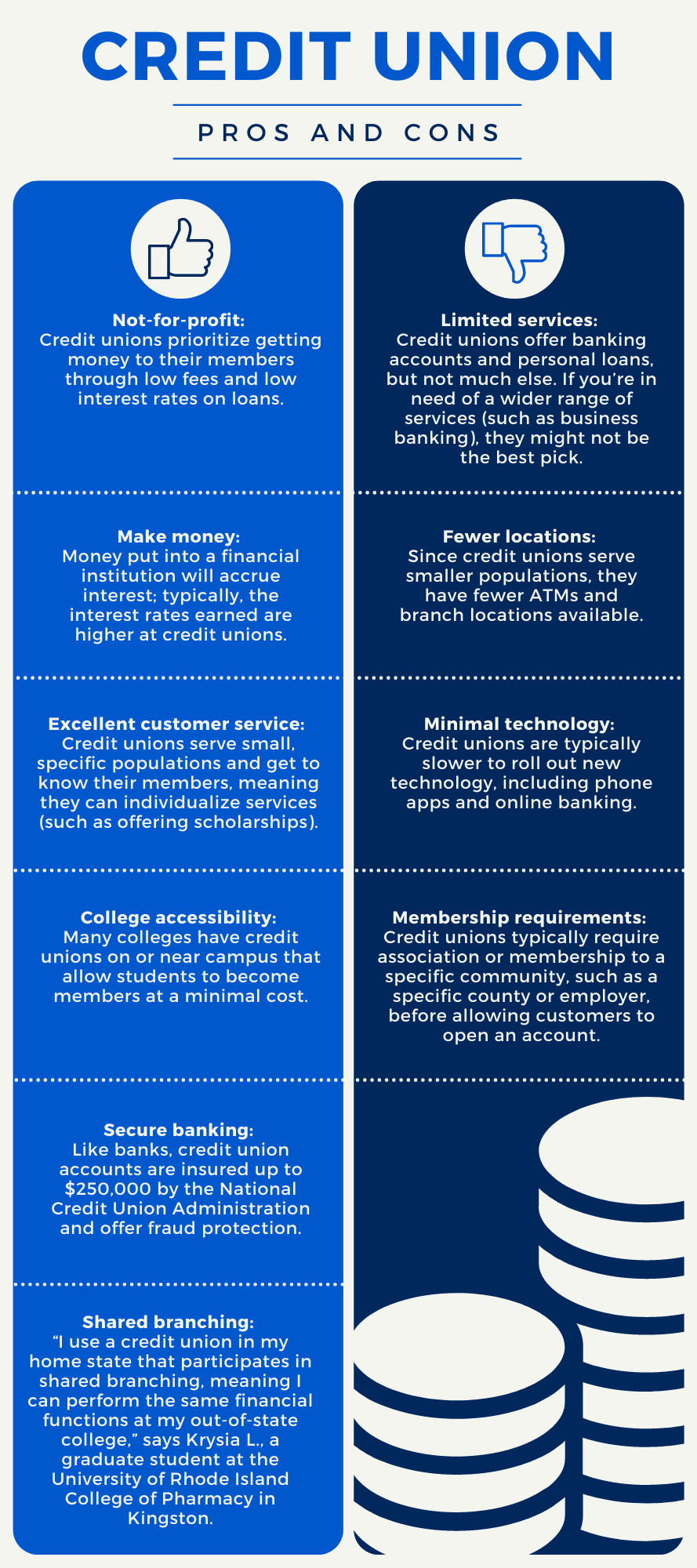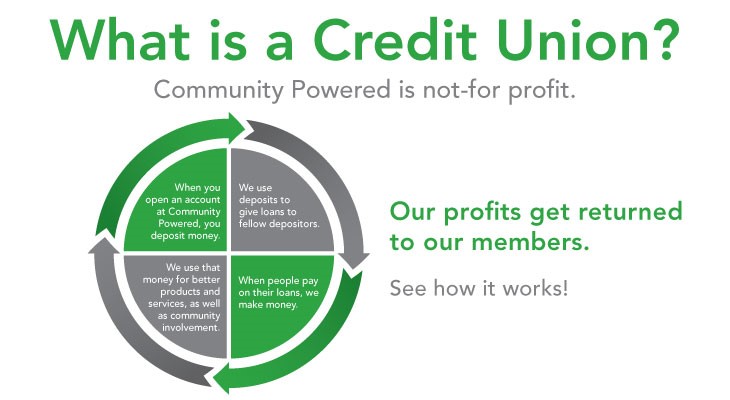Hybrid Line of Credit: Innovative Financial Products from Wyoming Credit Unions
Hybrid Line of Credit: Innovative Financial Products from Wyoming Credit Unions
Blog Article
The Ultimate Overview to Understanding Credit Scores Unions

Credit rating unions stand as unique monetary entities, rooted in principles of shared support and member-driven procedures. Past their foundational worths, understanding the complex operations of credit report unions involves a deeper expedition. Deciphering the intricacies of membership eligibility, the advancement of services used, and the distinct advantages they bring needs a comprehensive exam. As we browse with the intricacies of credit report unions, an insightful journey waits for to clarify these member-focused institutions and exactly how they vary from standard banks.
What Are Lending Institution?
Cooperative credit union are member-owned economic establishments that use an array of banking services to their participants. Unlike typical financial institutions, lending institution run as not-for-profit companies, indicating their primary focus is on offering their members instead of taking full advantage of revenues. Members of a credit score union typically share an usual bond, such as helping the same company, belonging to the very same neighborhood, or becoming part of the very same organization.
Among the essential advantages of cooperative credit union is that they often use greater rates of interest on cost savings accounts and reduced rate of interest on financings compared to financial institutions. Federal Credit Union. This is because lending institution are structured to benefit their participants straight, allowing them to hand down their earnings in the form of better rates and fewer fees. Furthermore, credit score unions are known for their personalized customer support, as they prioritize building partnerships with their participants to comprehend their special economic demands and objectives
History and Development of Lending Institution
The roots of member-owned financial cooperatives, understood today as debt unions, trace back to a time when communities looked for options to standard financial establishments. The principle of cooperative credit union come from the 19th century in Europe, with Friedrich Wilhelm Raiffeisen usually attributed as the pioneer of the participating banking activity. Raiffeisen established the first recognized credit scores union in Germany in the mid-1800s, emphasizing area support and self-help principles.
The advancement of cooperative credit union proceeded in North America, where Alphonse Desjardins developed the first lending institution in Canada in 1900. Soon after, in 1909, the first U.S. lending institution was created in New Hampshire by a group of Franco-American immigrants. These very early credit score unions operated on the essential concepts of mutual help, democratic control, and member possession.
Over time, cooperative credit union have expanded in appeal worldwide because of their not-for-profit framework, concentrate on offering participants, and using competitive economic services and products. Today, lending institution play an essential role in the economic industry, giving accessible and community-oriented financial choices for companies and people alike.

Subscription and Eligibility Standards
Membership at a credit report union is typically restricted to individuals satisfying details eligibility criteria based on the institution's founding principles and governing needs. Some credit score unions might just offer individuals that function or live in a specific area, while others might be customized to workers of a certain firm or participants of a particular organization.
Furthermore, cooperative credit union are structured as not-for-profit companies, implying that their key goal is to offer their participants instead of create revenues for shareholders. This focus on participant solution usually converts into even more tailored interest, reduced fees, and affordable rates of interest on cost savings and car loans accounts. By meeting the eligibility criteria and coming to be a participant of a cooperative credit union, people can access an array of monetary product or services customized to their particular requirements.
Providers and Products Provided
One of the crucial elements that sets credit report unions apart is the varied variety of monetary services and products they supply to their participants. Credit rating unions usually offer conventional banking services such as financial savings and checking accounts, fundings, and credit cards.
Additionally, lending institution often provide hassle-free online and mobile financial options for participants to conveniently handle their funds. They may use advantages such as shared branching, enabling members to access their accounts at other cooperative credit union throughout the country. Some lending institution also supply insurance items like life, home, and automobile insurance to aid members protect their possessions check this and loved ones.

Benefits of Financial With Cooperative Credit Union
When taking into consideration banks, exploring the benefits of banking with cooperative credit union exposes distinct benefits for participants seeking individualized service and competitive rates. One substantial benefit of lending institution is their concentrate on individualized customer support. Unlike large banks, lending institution are member-owned and prioritize building strong connections with their participants. This suggests that credit union personnel usually have a deeper understanding of their members' financial requirements and can use customized solutions to assist them accomplish their objectives. In addition, cooperative credit union are known for providing competitive rates of interest on cost savings and finances accounts. Because they are not-for-profit companies, credit history unions can often supply reduced financing prices, greater cost savings rates, and reduced costs contrasted to typical banks. This can lead to substantial cost savings for members in time. In general, banking with a credit history union can offer a much more personalized, cost-effective, and member-centric financial experience.
Conclusion
To conclude, lending institution attract attention as member-owned learn the facts here now banks that focus on serving their members over making best use of profits. With origins dating back to 19th century Europe, lending institution follow principles of shared aid and member ownership. They use a series of monetary product and services, including conventional financial solutions, investment choices, and affordable rates of interest. Membership eligibility requirements are specific and show a community-oriented technique, providing individualized customer support and a member-centric financial experience.
Credit unions are member-owned financial institutions that use an array of financial solutions to their members. The concept of credit history unions come from in the 19th century in Europe, with Friedrich Wilhelm Raiffeisen commonly attributed as the leader of the participating banking motion.The development of credit score unions proceeded in North America, where Alphonse Desjardins established the first debt union in Canada in 1900. Debt unions typically give standard banking solutions such as cost savings and examining accounts, financings, and Web Site debt cards.When thinking about financial organizations, exploring the advantages of financial with credit report unions exposes distinct advantages for participants seeking tailored solution and competitive prices.
Report this page